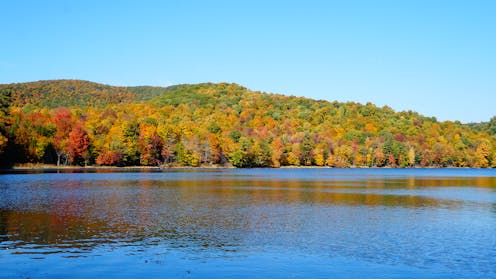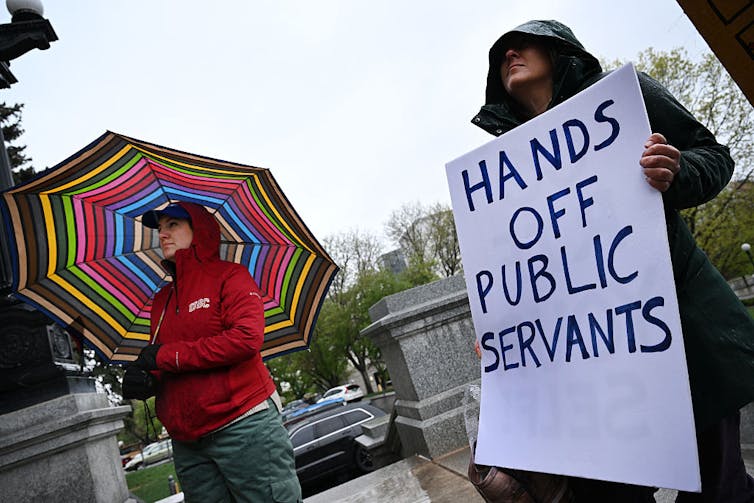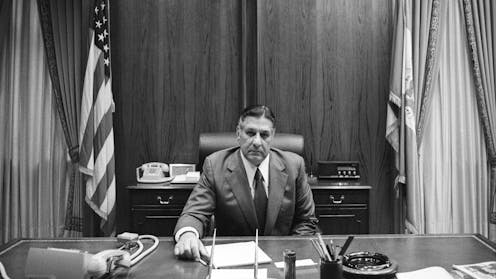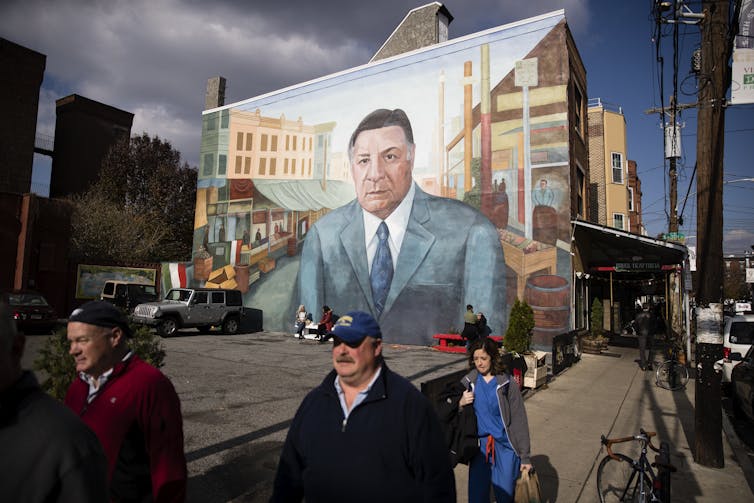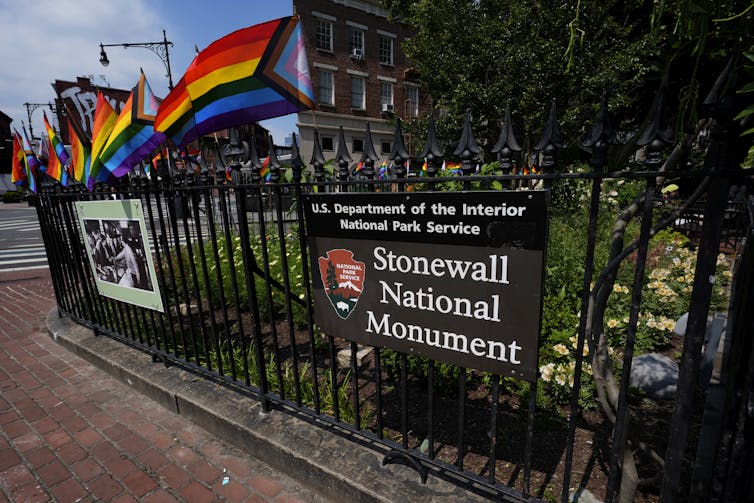Source: The Conversation – Africa – By Elizabeth Olayiwola, Senior Lecturer in Broadcast, Film, and Multimedia, University of Abuja
In Nigeria today, one doesn’t have to attend a church service to hear a sermon. The pulpit has moved – onto screens, into living rooms, and across YouTube.
Along with this shift, a fascinating genre has emerged: Nigerian evangelical cinema. These films blend entertainment with Pentecostal spirituality, turning prayers into special effects and spiritual battles into dramatic storylines.
This transformation is not accidental. It reflects a wider trend in which religion and media intersect to shape how Nigerians – and increasingly, Africans in the diaspora – understand the spiritual world.
As a media scholar I have been researching the Nigerian evangelical screen world for over a decade. As I show in my latest study in the book Contemporary African Screen Worlds, the rise of evangelical cinema is tied to Nigeria’s Pentecostal boom and the explosion of Nollywood, the country’s vast film industry, in the 1990s.
In the early days of Nollywood, films were distributed on video cassettes and shown in communal venues, including church halls. They spread to TV, where audiences embraced early Nollywood productions like Agbara Nla (The Ultimate Power) produced in 1993 by Mount Zion Faith Ministries International. Broadcast as a series, it dramatised spiritual warfare between Christians and demonic agents and became a national phenomenon.
The ministry, founded in 1985, houses Mount Zion Film Productions, the most prolific Christian film company in Nigeria.
Evangelical films blur the line between devotion and drama, prayer and performance. My study shows that they are not just niche productions aimed at church audiences. Their impact is far greater. The films reveal how millions of Nigerians imagine the spiritual world, how they navigate everyday crises, and how religion adapts to new technologies.
The Nigerian evangelical film culture also shows how a range of networks can build and push a cinematic culture forward, offering lessons to industries around the world about the power of leveraged networks.
How it all started
At the centre of this story is Mike Bamiloye, co-founder of Mount Zion Faith Ministries. Established by a small group of college graduates, it began with church stage plays before moving into video and TV.
Like the Yoruba theatre tradition from which it drew some of its inspiration, Mount Zion toured churches and neighbouring countries, staging plays and building audiences.
With fewer entertainment options available back then, TV audiences embraced Agbara Nla. The film tells the story of a village that is constantly punished by the forces of darkness because of a malevolent herbalist. God sends a young Christian missionary couple to battle him and deliver the community from evil.
What made Agbara Nla and similar films resonate was their familiarity. Nigerians had long been exposed to supernatural storylines. In the 1960s through to the 1980s, they occurred in Yoruba travelling theatre productions, a popular form of entertainment.
Later, the supernatural was kept alive in Nollywood’s many occult-themed films. Often involving witchcraft and magic, these films tend to tap into a blend of Christian and traditional Nigerian cosmologies. They revolve around the idea of spiritual warfare, of good versus evil and God versus the Devil.
Evangelical filmmakers simply retooled the formula, swapping out witchdoctors for pastors, charms for prayer, and gods for Christ.

Bestvillage/Wikimedia Commons, CC BY-SA
In many evangelical films, prayer is not just words muttered in the quiet of the heart. It is dramatised, given visual form, and staged as a battle with unseen forces. A woman kneeling in prayer might suddenly find herself in a parallel “spirit realm” where angels and demons clash. Her whispered incantations are translated into fireballs, lightning bolts, or shields of protection.
The effect is powerful. For Christian audiences, these films make visible what is usually invisible: the spiritual consequences of prayer. They confirm a belief that prayer works, not metaphorically but literally, in the everyday struggles of life.
Social messages
These films are more than just entertainment. They carry social messages too. One striking feature I’ve discussed in my earlier research is their focus on women.
Women are often depicted as especially vulnerable to spiritual attack – but also as powerful prayer warriors. In many films, a woman’s reproductive life – her fertility, sexuality, or motherhood – is given spiritual significance.
Read more:
How Nollywood films help Kenyan housemaids make sense of their lives
This framing reflects Pentecostal theology, where sex itself is sometimes cast as an act with spiritual consequences. So these kinds of Nollywood stories both challenge and reinforce gender norms.
On one hand, women are shown exercising spiritual authority. On the other, their bodies are often treated as sites of moral or spiritual conflict.
Entrepreneurship of faith
Behind the scenes, evangelical Nollywood also illustrates a different kind of creativity: entrepreneurship. Many film makers juggle ministry with business innovation, building networks of production, distribution and audience engagement. Evangelical film maker Opeyemi Akintunde, for example, started with short web stories, moved into publishing, and went on to adapt her work into films circulated on YouTube and in cinemas.
This entrepreneurial spirit is part of a broader pattern across Africa. Studies have shown how Pentecostal media – from films to radio to social media – are reshaping both religious practice and cultural economies.
In Nigeria, the church itself provides infrastructure, from funding and publicity to venues and technical equipment, making film ministry possible.
Beyond Nigeria
Studies have also shown how Nollywood is spreading, embraced by a global audience. The influence of Nigerian evangelical cinema is not limited to Nigeria.
Read more:
The rise of African prophets: the unchecked power of the leaders of Pentecostal churches
Riding on Nigeria’s transnational churches, these films and their film-making style today reach audiences across Africa, Europe and the US. Diaspora churches screen them during services; people watch them on their phones for inspiration or moral guidance.
This global circulation highlights the adaptability of both African Pentecostalism and Nollywood – and their capacity to shape imaginations (and souls) far beyond their local roots.
![]()
Elizabeth Olayiwola does not work for, consult, own shares in or receive funding from any company or organisation that would benefit from this article, and has disclosed no relevant affiliations beyond their academic appointment.
– ref. God and Nollywood: how Pentecostal churches have shaped Nigerian film – https://theconversation.com/god-and-nollywood-how-pentecostal-churches-have-shaped-nigerian-film-264279

